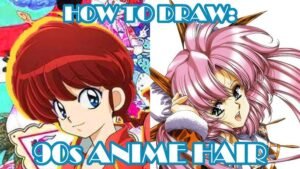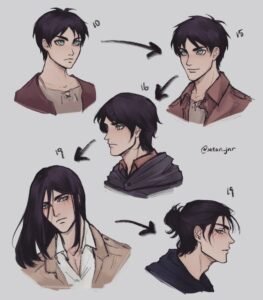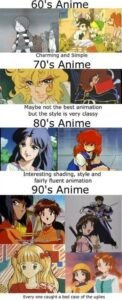Anime has given us worlds full of magic, adventure, and unforgettable characters — and one of the most iconic parts of these characters isn’t just their powers or outfits… it’s their hair. Japanese anime hairstyles have evolved from simple, practical designs into bold, symbolic, and gravity-defying statements that define entire characters.
In this article, we’ll take a fun yet in-depth look at how anime hair has changed over the decades, why it’s so important, and which styles became cultural icons both in Japan and around the world.

1. From Classic Foundations to Iconic Shapes
In anime’s early years, hair was kept simple yet striking. Osamu Tezuka — often called the “God of Manga” — designed characters like Astro Boy with sharp, distinctive shapes that could be recognized instantly even in black-and-white animation.
These styles were inspired by manga panel clarity and practical animation needs, but they set the tone for anime hair as a defining visual element. You can read more about these early influences on CBR’s hairstyl history.

2. Historical Japan’s Influence on Anime Hair
Many anime hairstyles borrow from traditional Japanese looks seen in the Heian and Edo periods — such as the long, straight tare-gami or the high samurai chonmage topknot.
These styles weren’t just fashion statements in history; they reflected class, gender, and even political allegiance. Anime cleverly uses these traditional touches to hint at a character’s personality or social background. For a deep dive, check out Anime Papa’s cultural hairstyle breakdown.

3. Exaggeration Becomes the Norm
As anime and manga grew bolder in the 80s and 90s, so did the hair. Characters like Yugi Mutou (Yu-Gi-Oh!) or Goku (Dragon Ball Z) sported hairstyles that defied gravity, logic, and hair gel physics.
These extreme styles weren’t just for visual flair — they instantly told you a character’s energy level, confidence, or role in the story. Learn more about why anime defies physics in this analysis by Dollworkz.
4. Cultural Symbols in Anime Hair
Some hairstyles have deep cultural or symbolic meaning:
-
Odango Buns – Popularized by Usagi Tsukino (Sailor Moon), they convey youthfulness and magical charm, drawing on East Asian hairstyle traditions.
-
Hime Cut – With its blunt bangs and long side locks, this “princess” style reflects refinement and elegance, often used for noble or mysterious characters. Learn more about the hime haircut’s history.
5. Real-World Fashion Meets Anime
Anime hair has also been shaped by real Japanese pop culture. The 1980s Seiko-chan cut, inspired by idol Seiko Matsuda, brought layered bangs and feathered sides into anime character designs — a perfect mix of retro charm and animated style. You can read more about it on Wikipedia.
6. Hair as a Storytelling Device
Hair changes in anime often signal character development or emotional turning points:
-
Ken Kaneki’s shift from black to white hair in Tokyo Ghoul mirrors his psychological transformation.
-
Tanjiro Kamado’s evolving ponytail in Demon Slayer reflects his journey from novice to seasoned warrior.
These transformations can be as powerful as any dialogue.
7. Why Anime Hair Still Captivates Us
From historical roots to futuristic experiments, anime hairstyles are a language of their own. They tell us who a character is, where they come from, and where they’re going — often before they say a single word.
Whether it’s the fiery streaks of Rengoku, the iconic spikes of Goku, or the elegant hime cut, anime hair continues to evolve, inspire, and influence fashion worldwide.
If you love anime style breakdowns, don’t forget to share this with your fellow otaku and maybe… try a daring anime hairstyle yourself. Just remember — real-world gravity will apply.
Read More: Webnewsing.com


